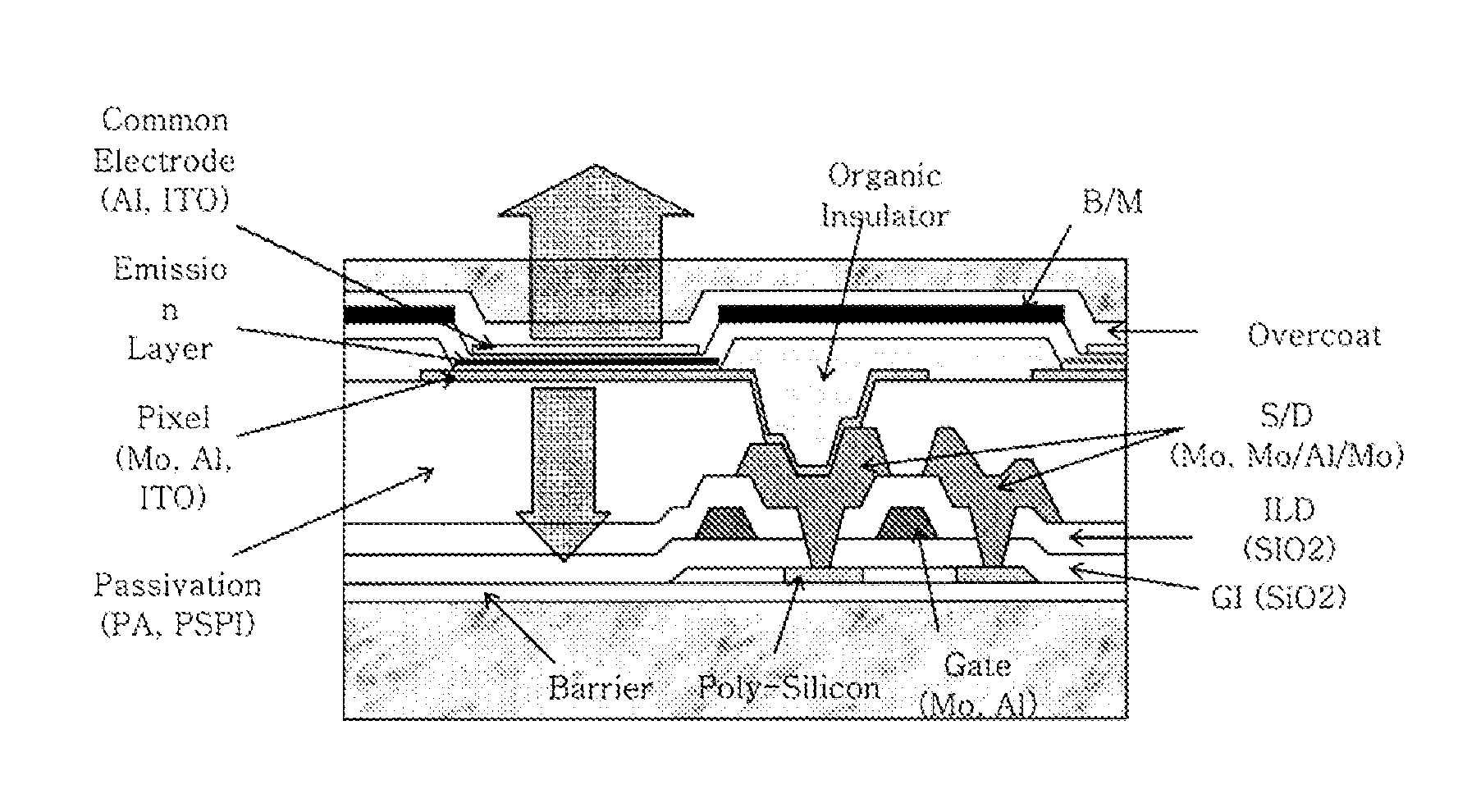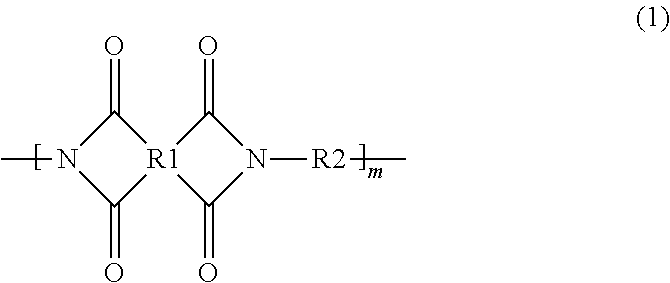Photosensitive resin composition containing polyimide resin and novolak resin
a technology of polyimide resin and novolak resin, which is applied in the direction of photosensitive materials, instruments, photomechanical equipment, etc., can solve the problems of small difference in dissolution rate between exposed and unexposed portions of resin, negative affecting device reliability, and difficulty in controlling the lateral angle of patterns of oleds, etc., to achieve easy control, increase the efficiency of electronic devices, and large difference in developability
- Summary
- Abstract
- Description
- Claims
- Application Information
AI Technical Summary
Benefits of technology
Problems solved by technology
Method used
Image
Examples
example 1
[0068]m-Cresol and p-cresol were mixed in a weight ratio of 5:5 to prepare a novolak resin having a weight average molecular weight of 4,500 on a polystyrene basis. One mole of 2,3,4,4′-tetrahydroxybenzophenone was reacted with 3 moles of 1,2-diazidonaphthoquinone-5-sulfonyl chloride to prepare a photosensitizer. 133 g (0.30 moles) of 4,4′-hexafluoroisopropylidenediphthalic anhydride as an acid anhydride was reacted with 87 g (0.31 moles) of bis(3-amino-4-hydroxyphenyl)sulfone and 16 g (0.07 moles) of 1,3-bis(3-aminopropyl)tetramethyldisiloxane as diamines at 180° C. for 1 hr to prepare a soluble polyimide resin of Formula 2:
[0069]4.5 g of the novolak resin, 4 g of the photosensitizer and 13.5 g of the soluble polyimide resin were dissolved in γ-butyrolactone and ethyl lactate. The solution was filtered through a membrane (0.2 nm) to prepare a photosensitive resin composition.
example 2
[0070]A photosensitive resin composition was prepared in the same manner as in Example 1, except that 9 g of the novolak resin and 9 g of the polyimide resin were used.
example 3
[0071]A photosensitive resin composition was prepared in the same manner as in Example 1, except that 13.5 g of the novolak resin and 4.5 g of the polyimide resin were used.
PUM
| Property | Measurement | Unit |
|---|---|---|
| pore size | aaaaa | aaaaa |
| thickness | aaaaa | aaaaa |
| temperatures | aaaaa | aaaaa |
Abstract
Description
Claims
Application Information
 Login to View More
Login to View More - R&D
- Intellectual Property
- Life Sciences
- Materials
- Tech Scout
- Unparalleled Data Quality
- Higher Quality Content
- 60% Fewer Hallucinations
Browse by: Latest US Patents, China's latest patents, Technical Efficacy Thesaurus, Application Domain, Technology Topic, Popular Technical Reports.
© 2025 PatSnap. All rights reserved.Legal|Privacy policy|Modern Slavery Act Transparency Statement|Sitemap|About US| Contact US: help@patsnap.com



